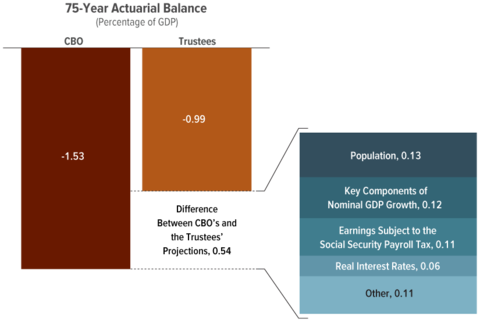How Would Joe Biden Reform Social Security and Supplemental Security Income?
By Karen E. Smith, Richard W. Johnson and Melissa M. Favreault of the Urban Institute
October 8, 2020
Abstract
Joe Biden has proposed increasing Social Security revenue, enhancing Social Security benefits, and expanding Supplemental Security Income, a program that provides cash benefits to low-income older adults and people with disabilities. Our projections show that his proposals would lift more than 1 million people out of poverty in 2021 and cut the poverty rate for adult Social Security beneficiaries over the coming decades by more than half. We project that by extending the Social Security payroll tax to earnings above $400,000, his plan would close about a quarter of the program’s long-term funding deficit and extend the life of the trust funds by about five years.
Read more!



